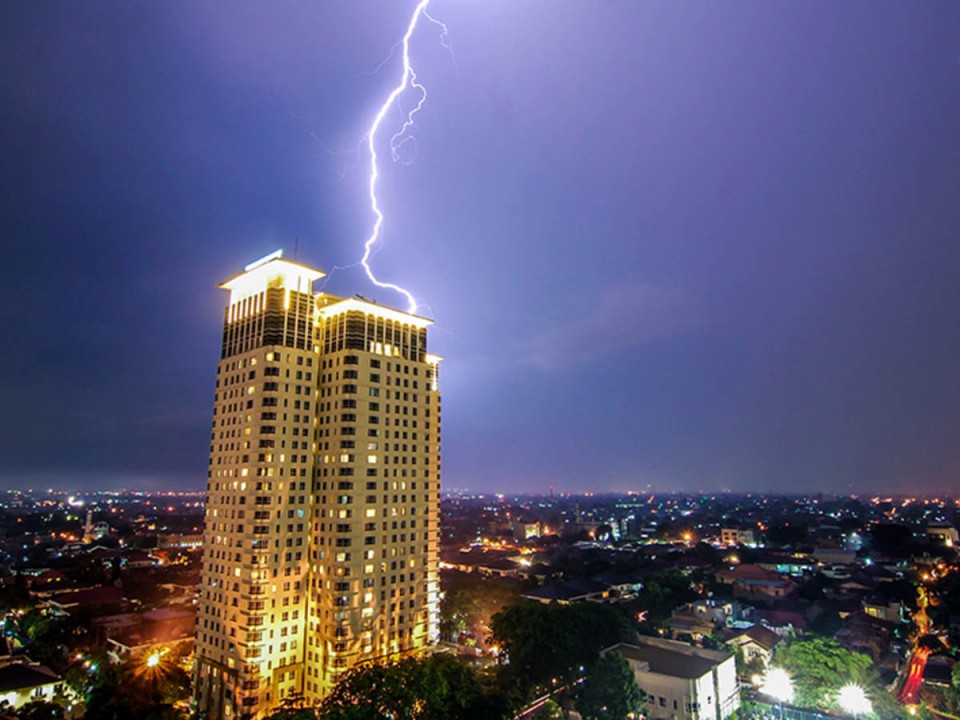Top 5 Myths About Lightning Protection Systems

Lightning is one of nature’s most powerful forces, and it can cause significant damage to buildings, electronics, and even people. Despite the widespread availability of lightning protection systems (LPS), misconceptions persist about their effectiveness and necessity. In this article, we will debunk the top five myths about lightning protection device, providing you with accurate information to help you make informed decisions.
Myth 1: Lightning Protection Systems Attract Lightning
One of the most common misconceptions is that installing a lightning protection system will attract lightning to your property. This myth likely stems from the visible presence of lightning rods, also known as air terminals, which are an integral part of LPS. However, these devices do not attract lightning. Instead, they provide a safe path for the electrical discharge to follow if a strike occurs.
Lightning protection systems are designed to intercept lightning strikes and safely conduct the electrical energy to the ground, thereby protecting the structure. The lightning rod, when properly installed, reduces the risk of damage by directing the lightning current through a network of conductors to a grounding system. This ensures the safety of the building and its occupants.
Myth 2: Lightning Protection Systems Are Only Necessary for Tall Buildings
While it’s true that taller structures are more likely to be struck by lightning due to their height, this does not mean that shorter buildings are immune. Lightning can strike any structure, regardless of height, and the consequences can be equally devastating. A lightning arrester is crucial for any building, regardless of its size or height.
For instance, residential homes, which are typically not as tall as commercial buildings, can still suffer significant damage from a lightning strike. Fire, electrical surges, and structural damage are all potential risks. By installing a lightning protection system, homeowners can protect their property and ensure the safety of their family.
Myth 3: Lightning Protection Systems Are Ineffective
Another prevalent myth is that lightning protection systems do not work or are not effective. This misconception may arise from a lack of understanding of how these systems operate. In reality, when correctly designed, installed, and maintained, lightning arrester are highly effective.
The components of a lightning protection system work together to create a pathway for the electrical current to travel safely to the ground. This includes air terminals, conductors, ground electrodes, and bonding elements. The system mitigates the risk of fire, electrical surges, and other forms of damage by managing the electrical discharge in a controlled manner. Therefore, the effectiveness of an LPS is not in question, provided it is properly implemented.
Myth 4: Lightning Protection Systems Are Expensive and Not Worth the Investment
Some property owners believe that the cost of installing a lightning protection system outweighs the benefits. However, this is a shortsighted view. The cost of installing an LPS is relatively modest compared to the potential damage and loss that can occur from a lightning strike.
Consider the financial impact of a lightning strike: property damage, loss of electronic devices, potential fire hazards, and even the cost of personal injury. The investment in a lightning protection system can prevent these losses. Moreover, many insurance companies offer discounts on premiums for properties with certified lightning protection systems, further offsetting the installation costs.
Myth 5: Modern Buildings and Electronics Don’t Need Lightning Protection
A common myth in the digital age is that modern buildings and electronics are inherently protected against lightning. While it is true that many modern buildings incorporate some form of grounding and surge protection, this does not replace the need for a comprehensive lightning protection system.
Modern electronics are particularly vulnerable to power surges caused by lightning strikes. A direct or nearby strike can cause severe damage to electrical and electronic systems, resulting in costly repairs or replacements. Integrating a lightning arrester into the overall protection strategy ensures that both the structure and its contents are safeguarded.
Understanding the Components of a Lightning Protection System
To appreciate the importance of lightning protection systems, it’s essential to understand their components and how they function together:
- Air Terminals (Lightning Rods): These are the most visible part of the system, placed at the highest points of a structure to intercept lightning strikes.
- Conductors: These cables connect the air terminals to the ground electrodes, providing a path for the lightning current.
- Ground Electrodes:These are buried in the ground and disperse the electrical energy safely away from the structure.
- Bonding Elements:These connect various components of the structure to ensure the entire building is at the same electrical potential, preventing side flashes.
The Science Behind Lightning Protection
Lightning protection systems are based on well-established scientific principles. When a thunderstorm occurs, it generates an electric field that extends from the clouds to the ground. If this field becomes strong enough, it can overcome the air’s resistance and create a lightning strike.
An LPS provides a low-resistance path for the electrical discharge to follow, which is critical in protecting the structure. By safely directing the lightning current to the ground, the system prevents damage to the building’s materials and electrical systems.
Conclusion: The Importance of Dispelling Myths
Dispelling these myths about lightning protection systems is crucial for the safety and protection of both residential and commercial properties. Lightning strikes are unpredictable and can occur anywhere, making it essential to have a reliable system in place
Investing in a lightning protection device not only protects your property but also provides peace of mind. By understanding the science and components of these systems, property owners can make informed decisions and appreciate the value of their investment.
In conclusion, the importance of lightning protection systems cannot be overstated. They provide a critical safeguard against one of nature’s most powerful forces. By debunking these myths, we hope to encourage more property owners to invest in these essential systems and protect their investments effectively.
